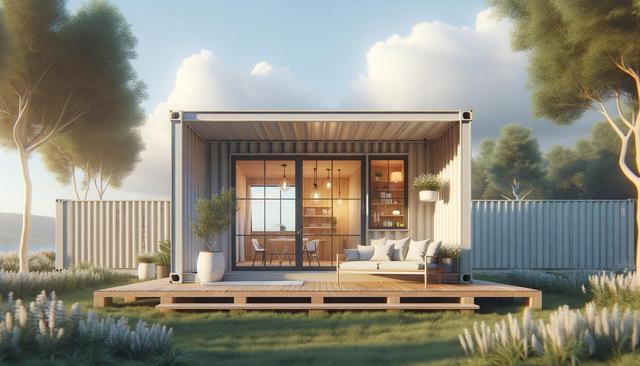Understanding How to Build a Container House
Learning how to build a container house involves more than simply stacking shipping containers. It starts with proper planning, including zoning laws, foundation work, and structural integrity. The process typically begins by selecting the right containers—usually made of steel—and preparing them through sandblasting and rust treatment. Then, modifications such as cutting out doors and windows, reinforcing structural areas, and setting up plumbing and electrical systems take place. Choosing a design that suits the climate and your lifestyle is crucial. While DIY construction is possible, many prefer to work with experienced professionals or seek custom container houses with installation services to ensure all technical aspects are handled correctly.
Before starting, it’s essential to consider where your container home will be placed. You’ll need a plot with legal permission for this type of structure. Once land is secured, a concrete foundation is often poured to provide a stable base. Integration of utilities like septic systems or city water and power connections should also be planned early in the process.
Weighing the Pros and Cons of Living in a Container Home
Container homes offer unique advantages but also come with challenges. When looking into the pros and cons of living in a container home, prospective homeowners should consider the following points:
- Pros: Eco-friendly through upcycling, faster construction timeline, often more affordable than traditional homes, modular and flexible design options.
- Cons: Potential for insulation and temperature control issues, limited interior space, zoning restrictions in some areas, and the need for regular maintenance to prevent rust or corrosion.
Understanding these factors can help you decide if a container home aligns with your lifestyle and long-term housing goals. While compact and efficient, container homes may require creative space solutions, especially for families or those needing more room. On the other hand, their minimalist appeal can be perfect for individuals or couples prioritizing sustainability and simplicity.
Choosing the Best Insulation Methods for Container Houses
One of the most critical aspects of container home design is insulation. Metal containers conduct heat and cold easily, so selecting the best insulation methods for container houses is vital for comfort and energy efficiency. Common insulation types include:
- Spray foam insulation: Offers excellent coverage and moisture resistance, sealing all gaps effectively.
- Rigid foam panels: Easy to install and good for wall and roof insulation.
- Blanket insulation (batts and rolls): Typically made from fiberglass, suitable for floors and ceilings.
Proper insulation not only improves thermal performance but also helps with soundproofing. In some climates, additional features like double-glazed windows or green roofs may further enhance energy efficiency. It’s also crucial to install a vapor barrier to prevent condensation, which can lead to mold or rust within the metal structure.
Finding the Right Builders and Services
For those not inclined to go the DIY route, finding the best container home builders in my area is an important step. Experienced builders can guide you through design, compliance with local codes, and the overall construction process. Many also offer custom container houses with installation services, allowing you to personalize the layout and finishes to your needs. When choosing a builder, consider factors such as:
- Experience with container architecture
- Portfolio of completed projects
- Customer reviews and references
- Availability of turnkey solutions
- Willingness to work within your budget
A reputable builder will also help you navigate permitting processes and ensure that your home meets safety and sustainability standards. Connecting with local contractors familiar with container modifications can make the entire experience smoother and more efficient.
Where to Buy a Turnkey Container House
If you’re looking for convenience and faster occupancy, you might be wondering where to buy a turnkey container house. These homes come pre-built and often include completed interiors, plumbing, electrical systems, and even basic furnishings. They are delivered to your site and require minimal setup, making them a great option for those who want to avoid construction hassle.
Turnkey container homes can be found through specialized modular housing companies, online marketplaces, and local builders who offer prefabricated models. When evaluating these options, compare what is included in the base price, such as appliances, fixtures, and delivery fees. It’s also beneficial to check whether installation support is provided or if you’ll need to coordinate that separately.
Turnkey models are especially advantageous for remote or difficult-to-access locations where building on-site is challenging. They are also ideal for vacation properties, rental units, or guest houses—offering a quick and relatively low-maintenance housing solution.
Conclusion: Is a Container Home Right for You?
Container homes are a flexible and increasingly popular housing option that blends modern design with sustainable living. Whether you’re learning how to build a container house from the ground up or searching where to buy a turnkey container house, it’s important to weigh all considerations carefully. From understanding the pros and cons of living in a container home to choosing the best insulation methods for container houses and working with the best container home builders in my area, each step plays a crucial role in the success of your project.
By doing thorough research and working with experienced professionals, you can create a container home that meets your needs while remaining efficient, stylish, and environmentally conscious. Whether you opt for a custom build or a ready-to-move-in model, container living offers a unique pathway to homeownership that’s worth exploring.




Leave a Reply